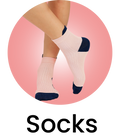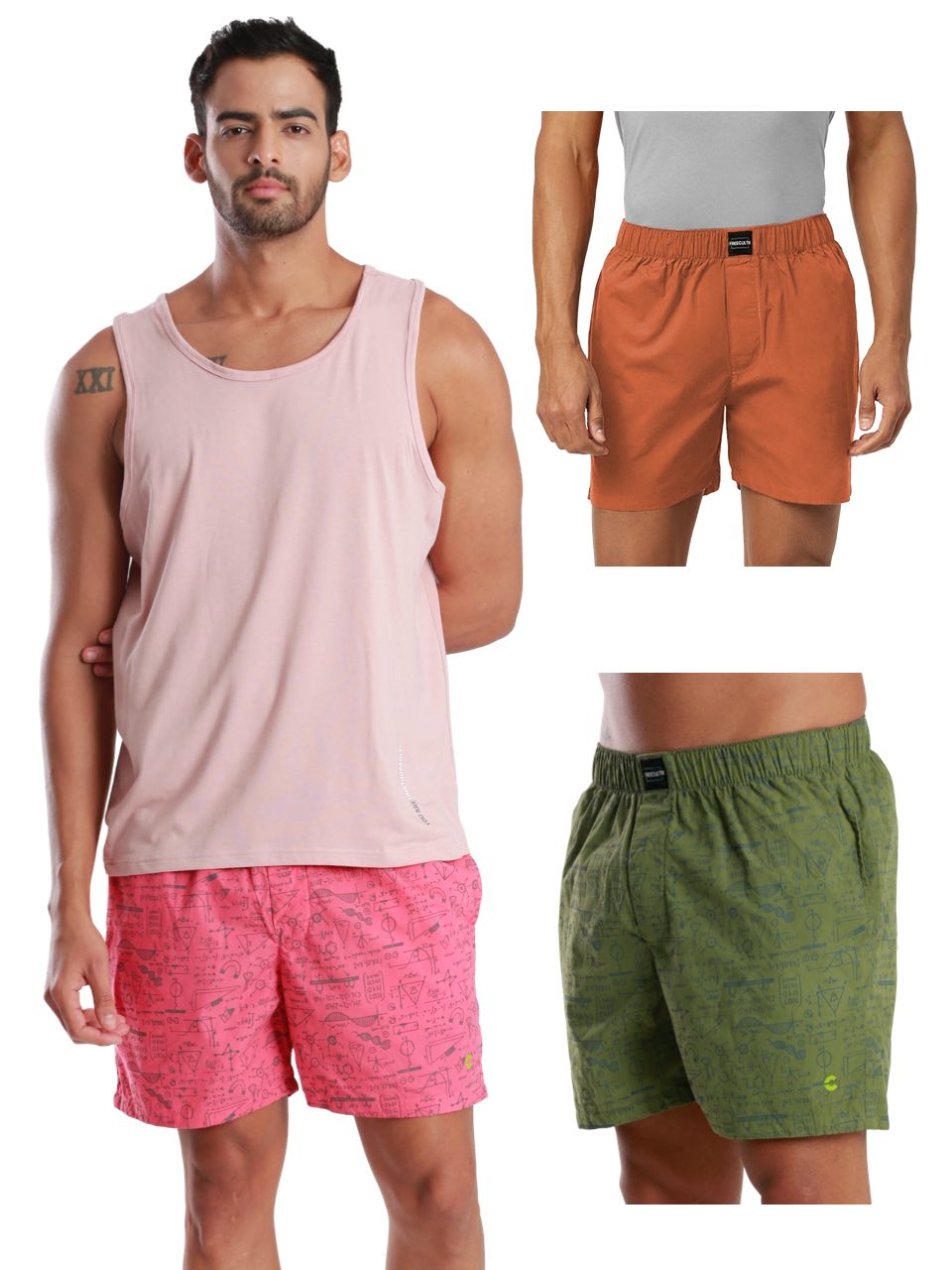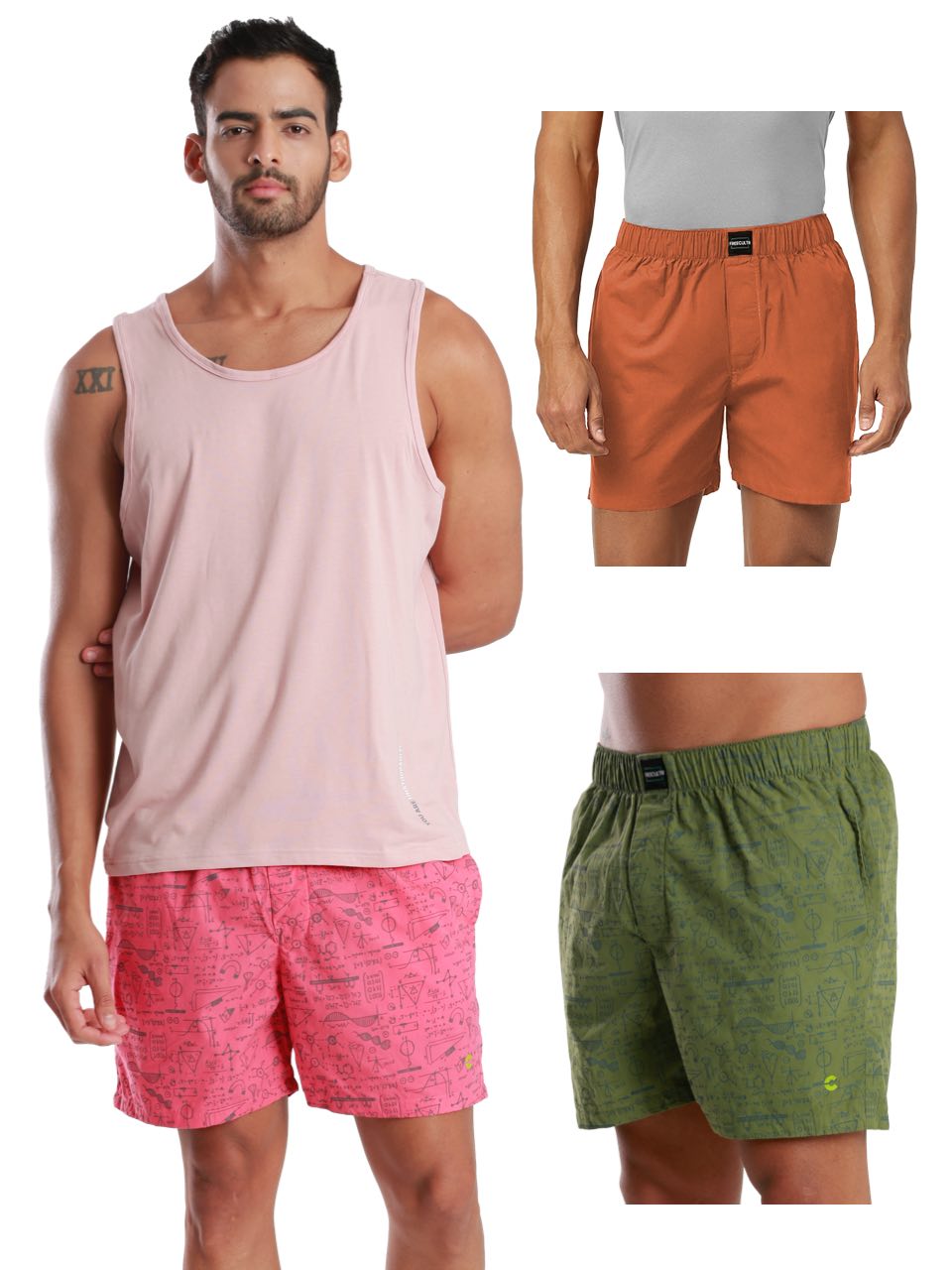Achieving true all-day comfort and optimal garment performance starts beneath your clothes, a reality often overlooked until discomfort strikes. An ill-fitting pair can lead to chafing, restricted movement. even circulation issues, negatively impacting everything from athletic performance to professional focus. With recent advancements in fabric technology emphasizing moisture-wicking and four-way stretch, understanding precise body measurements—like hip and waist circumference—becomes paramount for leveraging these benefits. The ideal fit, far from merely preventing pinching, supports proper circulation, maintains hygiene. significantly boosts confidence, transforming a basic necessity into a foundational element of daily well-being. Mastering the underwear size chart is therefore not just about avoiding discomfort. actively enhancing your physical and mental state.

The Secret Weapon for All-Day Comfort: Why Underwear Fit Really Matters
Let's be real: we spend almost every waking (and sleeping!) moment in our underwear, yet how often do we truly think about its fit? It's easy to grab the nearest size on the rack or just stick with what we've always worn. But here's the kicker: ill-fitting underwear isn't just a minor annoyance; it can seriously impact your comfort, health. even your confidence. Think about it:
- The Discomfort Dilemma Ever experienced constant tugging, bunching, or digging? That's your body screaming for a better fit. Too tight. you're dealing with uncomfortable pressure and red marks. Too loose. you're wrestling with fabric riding up or rolling down, creating awkward bulges and a constant need to adjust.
- Health Has Its Say This isn't just about feeling good. Poorly fitting underwear can lead to actual health issues. Chafing is a common culprit, especially in warmer weather or during physical activity. For those with sensitive skin, constant friction can cause irritation or even rashes. In some cases, overly tight underwear can restrict circulation or create a warm, moist environment that's a breeding ground for yeast infections or bacterial growth, particularly for women.
- The Confidence Factor When your foundation isn't right, it affects your whole outfit. more importantly, how you feel in your own skin. Imagine constantly worrying about visible panty lines or feeling self-conscious about how your underwear is sitting. A perfect fit, on the other hand, provides a smooth silhouette, boosts your confidence. allows you to forget you're even wearing it – which is exactly how underwear should feel!
So, the first step towards achieving ultimate comfort is understanding that your underwear fit is just as crucial as your outer clothing. And the key to unlocking that perfect fit? Mastering the underwear size chart.
Cracking the Code: Your Personal Underwear Size Chart Decoder
Ever stared at an underwear size chart and felt utterly confused? You're not alone! It might seem like a cryptic puzzle. once you know the key measurements, it becomes your best friend in the quest for comfort. Most underwear size charts rely on two main measurements:
- Waist Measurement This is your natural waist, which is typically the narrowest part of your torso, usually just above your belly button.
- How to Measure Grab a flexible tape measure. Stand upright and relaxed. Wrap the tape measure around your natural waist. Make sure the tape is snug but not digging into your skin. Breathe out normally and note the measurement.
- Why It Matters This measurement ensures the waistband of your underwear sits comfortably without digging or gapping.
- Hip Measurement This is the fullest part of your hips and buttocks.
- How to Measure Stand with your feet together. Wrap the tape measure around the widest part of your hips and glutes. Again, keep the tape snug but not tight.
- Why It Matters This measurement is crucial for ensuring the leg openings and overall fit around your bottom is comfortable and doesn't ride up or create uncomfortable lines.
Some brands might also include a "rise" measurement, which refers to the distance from the top of the waistband to the bottom of the crotch. This isn't usually required for an underwear size chart but can be helpful for understanding if a style is low-rise, mid-rise, or high-rise. Always use a soft, flexible tape measure for accuracy. avoid pulling it too tight. Remember, the goal is to find your perfect fit, not just guess.
Navigating the Sizing Jungle: Different Conventions Explained
It's not just one universal underwear size chart out there! Different brands, regions. even types of underwear can use varying sizing conventions. Understanding these can save you a lot of guesswork and potential returns.
- Letter Sizing (S, M, L, XL, etc.) This is the most common system. While convenient, the actual measurements these letters represent can vary wildly between brands. For instance, a "Medium" from one brand might be equivalent to a "Small" or "Large" from another. This is why always checking the specific brand's underwear size chart is paramount.
- Numeric Sizing (e. g. , 28, 30, 32 for waist; 4, 6, 8 for dress sizes) Some brands, especially those catering to a more precise fit or men's underwear, might use numeric sizing that corresponds directly to waist measurements in inches. Women's underwear might occasionally use dress sizes, though this is less common for underwear specifically.
- International Differences European, Asian. American sizing can differ significantly. An "M" in the US might be an "L" in Asia or a "Small" in Europe. If you're buying internationally, this makes the brand's specific underwear size chart even more critical.
Here's a general idea of how letter sizes might correlate to measurements. please, treat this as a rough guide only. Your go-to source should always be the specific underwear size chart provided by the brand you're considering:
| Size Type | Typical Waist Range (Inches) | Typical Hip Range (Inches) | General Notes |
|---|---|---|---|
| Small (S) | 27-29 | 35-37 | Often corresponds to numeric sizes like 4-6 US |
| Medium (M) | 30-32 | 38-40 | Often corresponds to numeric sizes like 8-10 US |
| Large (L) | 33-35 | 41-43 | Often corresponds to numeric sizes like 12-14 US |
| Extra Large (XL) | 36-38 | 44-46 | And so on... Always check the specific brand's underwear size chart! |
| Double XL (XXL) | 39-41 | 47-49 | Sizes go up from here, check individual brand's underwear size chart. |
The golden rule? Never assume. Always measure yourself and then compare those numbers to the specific underwear size chart for the brand you're buying from. A little effort here saves a lot of hassle later!
Beyond the Numbers: Style, Fabric. Personal Preference
While the underwear size chart is your map, the actual "feel" of your perfect fit also depends on other factors. It's not just about the numbers; it's about how the garment interacts with your body and your lifestyle.
- Underwear Style Matters Different styles offer different levels of coverage, support. fit characteristics.
- Briefs/Bikinis Generally offer moderate coverage and support. Fit is crucial around the leg opening to prevent digging or riding up.
- Thongs/G-strings Minimal coverage. Fit needs to be secure at the waist and comfortable in the thong line.
- Boy Shorts/Boxer Briefs Offer more coverage, often extending down the thigh. The fit here needs to accommodate both hip and thigh measurements to prevent rolling up or squeezing.
- Boxers (loose) Offer maximum airflow and minimal support. Sizing is usually more forgiving as they're designed for a looser fit.
- Fabric Finesse The material of your underwear plays a huge role in comfort and fit.
- Cotton Breathable, soft. absorbent. Offers less stretch than synthetics, so a precise fit from the underwear size chart is crucial. Great for everyday wear.
- Modal/Bamboo Incredibly soft, breathable. often more stretchy than cotton. They drape well and feel luxurious.
- Nylon/Spandex Blends Offer excellent stretch and moisture-wicking properties, often used in athletic or seamless underwear. These fabrics can be more forgiving if you're slightly between sizes. still, consult the underwear size chart.
- Lace/Silk Often used for more delicate or luxurious pieces. These might have less stretch, so fit is paramount.
- Personal Preference Some people prefer a snug, supportive fit, while others like a looser, more relaxed feel. Your personal comfort zone is key. For example, if you prefer a very relaxed fit, you might consider sizing up one from your exact underwear size chart measurement, especially in styles like boxers. Conversely, if you want maximum support (like for athletic activities), sticking precisely to the chart or even slightly sizing down for compression might be your preference.
It's a bit like choosing the right shoes for an occasion – you wouldn't wear hiking boots to a formal event. The right underwear style and fabric, combined with the perfect size from the underwear size chart, create an unbeatable comfort experience.
Troubleshooting Common Fit Issues
Even with the best intentions and careful measuring, sometimes things don't quite work out. Here are some common fit issues and what they usually mean:
- Too Tight
- Signs Digging into your skin, leaving red marks, visible panty lines (VPL) that are actually indentations, feeling constricted, waistband rolling down, leg holes cutting into your thighs or groin.
- Solution You likely need to go up a size. Re-measure yourself and check the underwear size chart again. Consider a style with more stretch or a higher rise for better coverage.
- Too Loose
- Signs Bunching up, riding up (especially between the cheeks), waistband gapping or sliding down, lack of support, feeling baggy or saggy.
- Solution You likely need to go down a size. Re-measure and consult the underwear size chart. Sometimes, a different style might also help (e. g. , if boxers are too loose, try boxer briefs).
- Leg Holes Digging or Riding Up
- Signs Uncomfortable pressure on your inner thighs or groin, constant wedgies.
- Solution This can indicate the overall size is too small, or the leg openings themselves are cut too narrow for your body shape. Try sizing up, or look for styles with wider leg openings or more stretch in the leg band. Sometimes, a high-cut brief or bikini can alleviate this.
- Waistband Rolling
- Signs The top band of your underwear folds over itself.
- Solution Often means the underwear is too tight around your waist, or the rise is too low for your torso, causing it to push down. Try a larger size, or a higher-rise style.
Don't get discouraged if your first try isn't perfect. Finding the right fit is a process of elimination sometimes. knowing these common issues helps you pinpoint the problem.
Your Action Plan: Tips for Achieving Your Perfect Underwear Fit
Ready to ditch the discomfort and embrace blissful underwear bliss? Here’s your actionable plan:
- Measure, Measure, Measure (Regularly!) This is the absolute cornerstone. Your body changes over time, so don't rely on measurements from years ago. Aim to measure your waist and hips every few months, especially before a major underwear shopping spree. Write down your numbers!
- Always Consult the Brand's Underwear Size Chart We can't stress this enough. Every brand has its own specific sizing. A "Medium" in one brand could be a "Small" in another. Take those fresh measurements and directly compare them to the underwear size chart on the product page.
- Read Reviews for Fit Insights Before buying, especially online, check customer reviews. People often mention if an item "runs small" or "runs large," or if it's particularly good for certain body types. This is invaluable real-world feedback!
- Don't Just Rely on Your Outerwear Size The size of your jeans or dress doesn't always translate directly to underwear. Underwear fit is more about direct body measurements for comfort and support.
- Consider Buying a Few Sizes (and Returning What Doesn't Fit) If you're truly unsure, especially when trying a new brand, consider ordering a couple of sizes around your estimated fit. Many retailers offer easy returns, making this a low-risk way to find your perfect match. Just remember to keep hygiene in mind; only try them on over your existing underwear.
- Think About Your Activities Are you buying underwear for everyday wear, intense workouts, or lounging? Your activity level can influence your ideal fit. For workouts, you might want something more supportive and moisture-wicking that stays put.
- It's an Investment in Your Comfort Think of well-fitting underwear not as an expense. as an investment in your daily comfort, health. confidence. You wear it all day, every day – it's worth getting right!
One friend of mine, Sarah, used to dread buying underwear. She'd always grab her usual "Large" and inevitably end up with waistbands that dug in or leg holes that rode up. After a particularly uncomfortable day, she decided to finally measure herself and actually look at the underwear size chart for her favorite brand. Turns out, she was actually a "Medium" in that brand. needed an "XL" in a different, less stretchy style. The revelation changed her whole outlook. "It's like I've been living in discomfort for years without even realizing it," she told me. "Now, my underwear just disappears – and that's the best feeling." Her story is a perfect example: a little knowledge and a few minutes with a tape measure can lead to a world of difference.
Finding your ideal underwear fit is a journey, not a destination. But with your trusty tape measure and the power of the underwear size chart, you're well-equipped to achieve all-day comfort and confidence, one perfect pair at a time.
Conclusion
Achieving your ideal underwear fit is truly a game-changer, moving beyond mere numbers on a chart to unlock unparalleled comfort and confidence. Remember, an accurate measurement is your first step. it's just the beginning. Don't hesitate to consult individual brand charts, as sizing can vary widely – what's a medium in one label might be a large in another, especially with the current trend towards more diverse body representations. I’ve personally found that taking an extra minute to measure ensures I avoid that uncomfortable digging or constant readjustment. Consider how fabrics like ultra-soft modal or breathable bamboo drape differently than traditional cotton; they might allow for a snugger, yet still comfortable, fit. Ultimately, it’s about how it feels when you move, whether you’re doing a quick squat test or just going about your day. Embrace this journey to discover your perfect fit; it’s a small change that yields immense, all-day comfort and a boost in self-assurance.More Articles
Inner Wear – Ultimate Comfort & Seamless FitTrunks for Men – Breathable Support & Freedom of Movement
Boxers for Women – Relaxed Fit & Soft Loungewear
XYXX Vs Jockey – A Comprehensive Comparison & Top Features
FAQs
Why bother with an underwear size chart?
Using a size chart ensures you get the perfect fit, which is key for all-day comfort and preventing issues like chafing or digging. It takes the guesswork out of buying underwear, making sure your undies feel great from morning till night.
How do I actually use a size chart to pick my underwear?
First, you'll need to take your body measurements, usually around your waist and hips. Then, compare these measurements to the chart provided by the specific brand. Find the size range that matches your numbers. that's your ideal fit!
What specific measurements do I need to take for underwear?
Typically, you'll need your waist measurement (the narrowest part of your torso, usually above your belly button) and your hip measurement (the fullest part of your hips/buttocks). Make sure to use a flexible measuring tape and don't pull it too tight for accurate results.
What if my measurements fall between two sizes on the chart?
If you're between sizes, it usually depends on your preference. For a snugger fit, go with the smaller size. For a more relaxed or comfortable fit, especially for sleep or lounging, choose the larger size. Often, going up is safer for maximum comfort.
Is underwear sizing consistent across different brands?
Unfortunately, no. Underwear sizing can vary quite a bit from one brand to another, almost like jeans! That's why it's super essential to check the specific size chart for each brand you're considering, rather than just relying on the size you usually wear.
How can I tell if my underwear fits correctly once I put it on?
Well-fitting underwear should feel comfortable and not restrict your movement. It shouldn't dig into your skin, bunch up, or ride up excessively. There should be no gaping or extra fabric. it should stay in place without needing constant adjustment throughout your day.
Can wearing the wrong size underwear really cause problems?
Absolutely! Underwear that's too small can cause discomfort, chafing, skin irritation. even affect circulation. If it's too large, it can bunch up, feel bulky. won't provide the support you need, leading to an uncomfortable and frustrating day.






